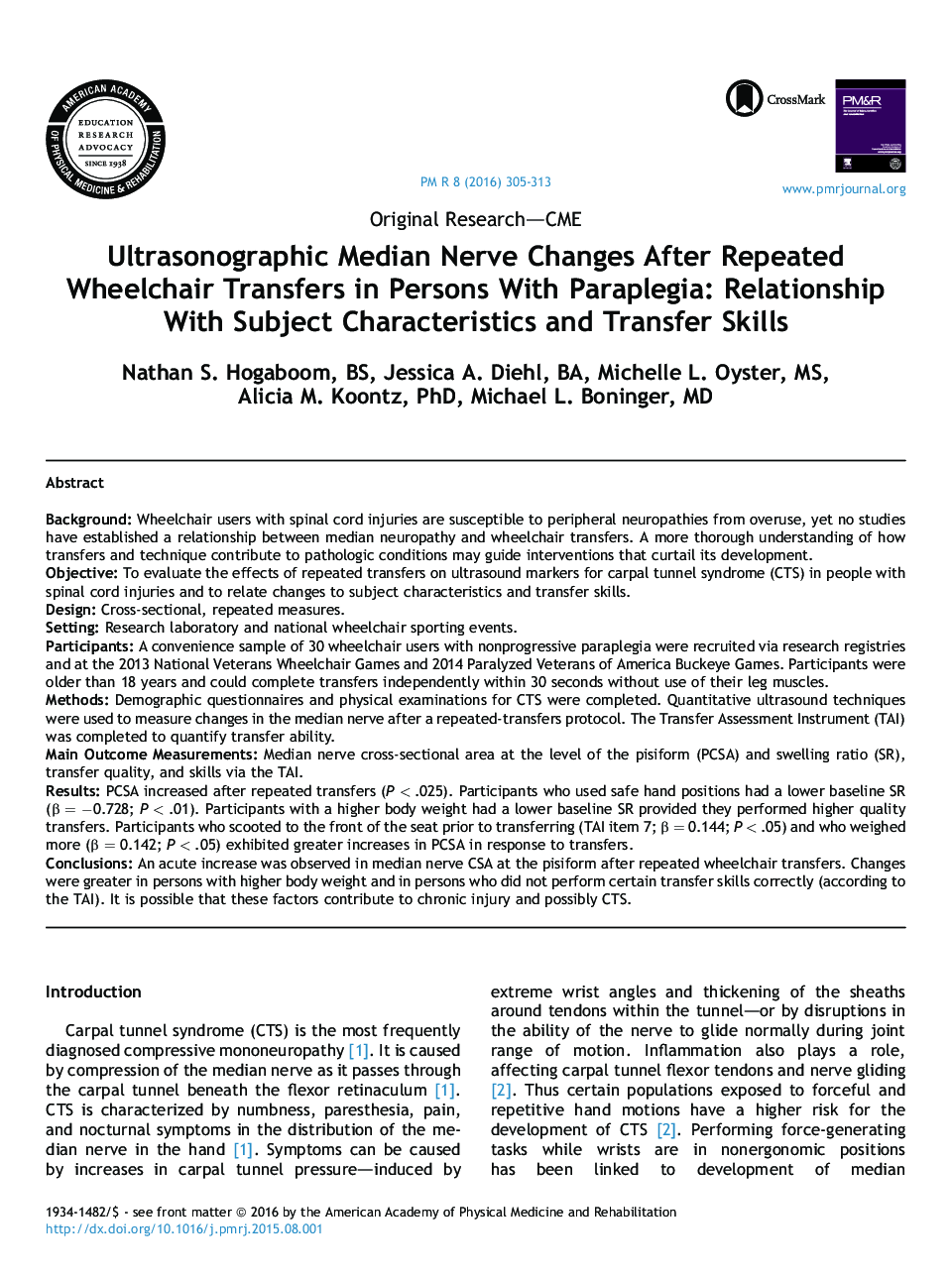| کد مقاله | کد نشریه | سال انتشار | مقاله انگلیسی | نسخه تمام متن |
|---|---|---|---|---|
| 2714928 | 1145294 | 2016 | 9 صفحه PDF | دانلود رایگان |
BackgroundWheelchair users with spinal cord injuries are susceptible to peripheral neuropathies from overuse, yet no studies have established a relationship between median neuropathy and wheelchair transfers. A more thorough understanding of how transfers and technique contribute to pathologic conditions may guide interventions that curtail its development.ObjectiveTo evaluate the effects of repeated transfers on ultrasound markers for carpal tunnel syndrome (CTS) in people with spinal cord injuries and to relate changes to subject characteristics and transfer skills.DesignCross-sectional, repeated measures.SettingResearch laboratory and national wheelchair sporting events.ParticipantsA convenience sample of 30 wheelchair users with nonprogressive paraplegia were recruited via research registries and at the 2013 National Veterans Wheelchair Games and 2014 Paralyzed Veterans of America Buckeye Games. Participants were older than 18 years and could complete transfers independently within 30 seconds without use of their leg muscles.MethodsDemographic questionnaires and physical examinations for CTS were completed. Quantitative ultrasound techniques were used to measure changes in the median nerve after a repeated-transfers protocol. The Transfer Assessment Instrument (TAI) was completed to quantify transfer ability.Main Outcome MeasurementsMedian nerve cross-sectional area at the level of the pisiform (PCSA) and swelling ratio (SR), transfer quality, and skills via the TAI.ResultsPCSA increased after repeated transfers (P < .025). Participants who used safe hand positions had a lower baseline SR (β = −0.728; P < .01). Participants with a higher body weight had a lower baseline SR provided they performed higher quality transfers. Participants who scooted to the front of the seat prior to transferring (TAI item 7; β = 0.144; P < .05) and who weighed more (β = 0.142; P < .05) exhibited greater increases in PCSA in response to transfers.ConclusionsAn acute increase was observed in median nerve CSA at the pisiform after repeated wheelchair transfers. Changes were greater in persons with higher body weight and in persons who did not perform certain transfer skills correctly (according to the TAI). It is possible that these factors contribute to chronic injury and possibly CTS.
Journal: PM&R - Volume 8, Issue 4, April 2016, Pages 305–313
